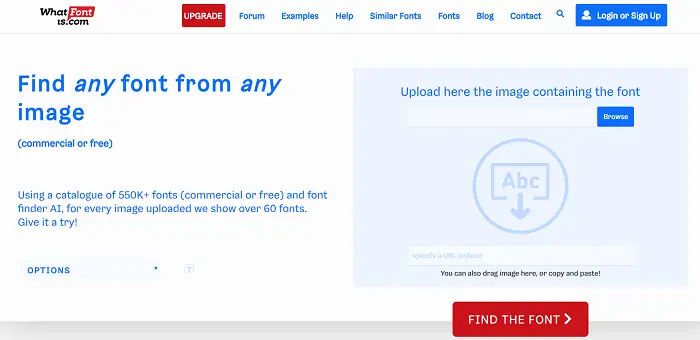The best freelance writers (and pretty much every other freelancer: designers, developers, photographers, content marketers, etc.) have creative portfolios where they showcase their work. This is their business card that potential customers will carefully check before sending them an email.
A great portfolio will quickly demonstrate to potential clients and/or employers what kind of work you can do, and keep in mind that your portfolio itself is a project that you can use to showcase your skills.
Creating your freelance writing portfolio can be tricky, especially if you are just starting and you don’t have any idea what to present. But as previously said, if this is the case, simply use the portfolio as a separate project where you will showcase your skills. Make examples of potential work, closely work with a designer for a creative portfolio, or you can simply use a powerful drag-and-drop builder like WIX. Here you have a great template to start with to create your own portfolio in a couple of minutes, without having to write a single line of code and without having any special skills.
Here are some tips that will greatly help you to build your own freelance writing portfolio today.
1. Your portfolio functions
Show to potential customers and employers what you can do for them.
In a creative but clean way, don’t overcomplicate the design or the functionality of your portfolio. Everything must be well structured.
People believe much more what they see than what they hear. Show them examples of your work (past work or just examples of what you can do if you don’t have a working history). But don’t only show them pictures of your work, explain every part of your portfolio so they will have a better understanding of your work.
Add non-paid projects
This is a great way to build a portfolio when you don’t have working experience. Show your portfolio viewers what you did in school, in training courses, or what you practiced writing for different ideas. Your portfolio is much better if you also include free work, not only the standard sections with paid work.
Talk about education
Showcase your education and let people know why you are a great candidate for their projects or companies. Tell them what trainings you have completed, who you learned from, what skills you have, and so on.
Education is as important as your CV. Use it properly and it can be a strong differentiator.
Build a dedicated section for press, mentions, and testimonials
Testimonials work great but you need to do it in a different way than the standard where you put a company name or customer with a text under his picture. If possible, kindly ask your customers to do a 1-minute video with their own mobile phones, telling your potential customers why they hired you, and what you did well for them. This will be much more personal and 100% trustworthy.
2. Portfolio design
Your portfolio design is extremely important. When potential clients visit your website, first they will see the design. In seconds, their subconscious will decide if it’s nice or not. If it’s not, you must impress them fast with your work – or something else.
But if your design is pleasing, potential customers will take additional time to find out more about you.
Your portfolio design has to be clean, pixel-perfect, modern, creative, and unique. It’s quite a difficult task even for professional designers, but you can do it without pro skills by using website builders. What you must do before designing your own work is to look for inspiration online. See how others built their portfolios (what they did well and not so good), pick their best points, and put them together for your own portfolio. In this website, you will find 50 excellent portfolios for inspiration. But, always keep in mind that inspiration comes from everything – not only from other writing portfolios.
A huge part of your design is the font you are using. A well-chosen font will play a significant role in your portfolio and a bad one will destroy your overall design. Pay serious attention to this.
To properly choose the font for your portfolio, look at websites for inspiration for fonts, like this one. Here you will find 30 great free fonts.
Another way to have a great logo for your portfolio is just to pick the same font you like from another website. How does that work? Using a simple and efficient font finder, you can find any font from any image. After you take a clean screenshot of the text containing the font you want to identify, you upload it, and the advanced AI will do the rest, showing you the font you are looking for – and over 60 similar fonts with links to pages form where you can download or buy them.
Use this software each time you browse the internet and you find a font you like. The internet is filled with tens of thousands of fonts, free and paid, but finding the right one for your portfolio can be extremely difficult.
3. Contact page
Your portfolio is not complete if you don’t have a great contact page. Your page should contain your email and phone number. Some people hate contact forms – they feel that they cannot contact you in a personal way and that their message will somehow be missed. It is also great for you to put all the information there, as you don’t want to miss potential customers because your contact form is not working.
Creating your own writing portfolio is doable, even for free. Bear these tips in mind and create the stunning portfolio you deserve.




Leave a Reply